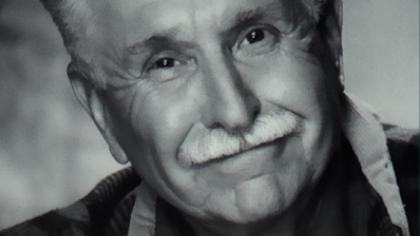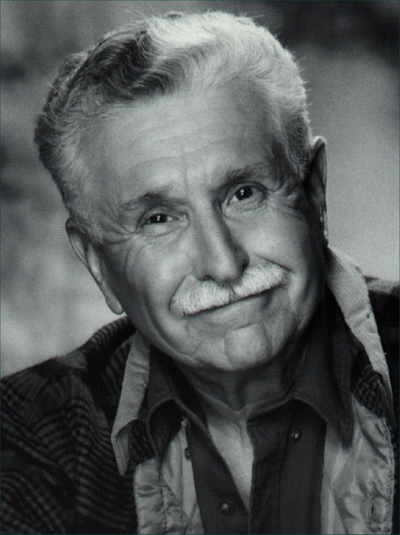 Publisher's note: We believe the subject of history makes people (i.e., American people) smarter, so in our quest to educate others, we will provide excerpts from the North Carolina History Project, an online publication of the John Locke Foundation. This seventieth installment, was originally posted, by Jonathan Martin, in the North Carolina History Project.
Publisher's note: We believe the subject of history makes people (i.e., American people) smarter, so in our quest to educate others, we will provide excerpts from the North Carolina History Project, an online publication of the John Locke Foundation. This seventieth installment, was originally posted, by Jonathan Martin, in the North Carolina History Project.
William Sydney "O. Henry" Porter
William Sydney Porter, or more famously known by his pen name O. Henry, was a popular short story writer during the early twentieth century. A writer whose personal life paralleled his fictional works, Porter lived a varied life throughout the South, Honduras, and New York City. Most importantly though are not the places where Porter traveled but his early childhood in Greensboro, North Carolina. Born on September 11, 1862, to a middle-class family, William was the middle child of three sons. He was only three years old when his mother and brother passed away from tuberculosis. Surviving family members were William's mother and brother, and they influenced the future author in a drastic way.
Grandma Porter, a self-trained doctor and local figure in Greensboro, raised the Porter children after William's mother passed away. Will's father and physician, Algernon Porter, cared for his children, but an infatuation with inventing a perpetual motion machine and drinking whiskey hindered him from being a true father figure to William. Despite Algernon's personal struggles, Will enjoyed a tranquil childhood, and he learned much about writing and literature from his Aunt Lina Porter. From 1867 to 1876, Aunt Lina taught William privately, and he garnered an affinity and knack for storytelling, writing, and drawing. Three years after his studies with his aunt, William apprenticed at the W. C. Porter Company drugstore beginning in 1879. William's uncle, Clark Porter, allowed him to work at the pharmacy for several years, and he soon became a licensed pharmacist. It was during his time at his uncle's drugstore that he fell in love with Sara Lindsay Coleman or "Sall." 19 years old at the time, William was so shy that he could never ask Sall out on a date. In 1881, William left Sara, his family, and North Carolina behind; he headed west to the state of Texas.
While in Texas, William became a cowboy of sorts and he earned recognition as a broncobuster. In addition to his knowledge of the frontier, the author became proficient in Spanish, memorized most of Webster's dictionary, and he started writing stories of the wild west. Yet, William was not confident that the public would accept his work; he never submitted his western stories, destroying stories as soon as he wrote them. Growing in his love of Texas, William decided to move to Austin in 1884. He soon accepted a job as a bank teller at the First National Bank. In 1887, William eloped with Athol Estes, and they would later have a son who died shortly after birth. However, in 1889 the couple had a daughter, Margaret, but Athol's health worsened drastically after Margaret's birth. Despite Athol's health troubles, she continued to encourage William to write and at the request of his wife, he submitted his publications to the Detroit Free Press.
William eventually grew bored with his job as a bank teller in Austin, and he decided to start his own magazine called The Rolling Stone. A solo project, William devoted most of his time to writing and drawing for the new magazine, eventually quitting his bank job. The Rolling Stone gained popularity with residents in Austin, but struggling to keep the presses rolling, William had to discontinue the magazine a year shy of its first publication.
From 1894 to 1897, William would experience two traumatic events that would eventually spur the true writings from the fledging author. In 1895 William worked as a columnist at the Houston Daily Post, but he was soon ordered to court in Austin on charges of embezzlement during his employment at First National Bank. The manager and owner had filed a report that claimed William had stole nearly $5,000 while he worked at the bank. Upon hearing the charges against him, William made his way to New Orleans where he boarded a boat for Honduras. (Honduras, at that time, had no extradition treaty with the U.S.). While in Honduras, William became friends with Al Jennings, the notorious train robber. Jennings would later write a book about his relationship with the author, and he even claimed that William and his posse had toured across South America.
After 7 months in Honduras, William returned to Austin in 1897 because his wife was very ill. Upon his return to Texas, William was formally charged with embezzlement, and his wife died several months later. In February 1898, William, now thirty-five years old, was found guilty and sentenced to five years in prison at the Ohio Penitentiary. When confronted with his crime, William would write his mother-in-law and claim, "I am absolutely innocent of wrongdoing in that bank matter...I care not so much for the opinion of the general public, but I would have a few of my friends still believe there is good in me."The Ohio Penitentiary was a harsh life for prisoners, but William received partial treatment due to his skills as a pharmacist. Allowed a higher status than the normal prisoner, William was given more free time, and it was during these long night hours that William adopted the pseudonym O. Henry and penned some of his best short stories. Although historians and literary critics disagree, many believed Porter chose the pseudonym "O. Henry" because his childhood cat, Henry the Proud, answered to the young William's call "Henry, Oh Henry." However, others believe that William simply wanted a catchy and memorably name.
O. Henry wrote numerous short stories while in prison. His first story, "Whistling Dick's Christmas Stocking," was published by McClure's Magazine and became a steppingstone for the author's success. The mysterious author grew in fame and recognition, but publishers and readers alike were clueless regarding O. Henry's identity. (William would send his stories to the wife of another incarcerated banker who would then send them along to magazines in the U.S.). O. Henry received widespread acclaim because of his trademark tales of gentle, warm-hearted characters and ironic plot twists at the end of the story. These iconic plot transitions were soon referred to as "O. Henry Endings."
Released in 1901 on good behavior, O. Henry moved to New York at the request of his editor in the big city. He would soon enter a writing spree for Ainslee's and McClure's Magazine, and he wrote over 100 short stories in only two years. While living in the city, O. Henry was finally free to experience the urban lifestyle and write about his time in North Carolina, Texas, and his new life in the city. Flourishing in this new habitat, the author was even quoted as saying he "would like to live a lifetime in each street in New York. Every house has a drama in it."
Even though O. Henry wanted a lifetime in the city of New York, fate decided differently. The author would later marry his childhood sweetheart, Sarah Coleman, and he moved to Asheville in 1907. Despite his vigor to continue writing, O. Henry's health prevented him from fully accomplishing his goal from experiencing every crevice of the Big Apple. He eventually moved back to New York with his wife, but he passed away on June 5, 1910, due to complications from diabetes and other illnesses. O. Henry's wife took his body back to Asheville, and today the author is buried in the historic Riverside Cemetery. Overlooking a beautiful mountainous landscape, the Riverside Cemetery is also the burial site of other famous North Carolinians including Thomas Wolfe, Robert Brank Vance, and Zebulon B. Vance.
From 1910 to 1920, five single volume collections were released after O. Henry's death. In addition to a complete collection of his most famous works, C. Alphonso Smith, O. Henry's childhood friend, finished a biography on the author in 1916. O. Henry's unique plot twists and interesting character personalities influenced the American short story genre to a large extent, particularly his stories "The Ransom of Red Chief," "The Gift of the Magi," and "Memoirs of a Yellow Dog." He would impact other short story authors such as Lilian Jackson Braun, Orson Scott Card, and Helen Eustis. In addition, the O. Henry Festival, founded in 1985, honors the life of William Sydney Porter every April. Presently, Greensboro College hosts the festival as well as mini-dramas that detail the author's life which are held on his birthday, September 11th, every year.
O. Henry's Tar Heel and middle-class background directly influenced his literary style.. The culture of the Reconstructed South, along with his childhood in Greensboro, affected Porter's voice and his connection to his birthplace. For example, O. Henry wrote a story that was inspired by the journalist Charles Evans's fictional character, the Fool-Killer. Originally a writing persona that described his journey through Piedmont North Carolina, the Fool-Killer was a feisty character that would beat any fool he met along his way across the state. Interestingly, even after Porter had moved to New York and transitioned into writing about the big city, the North Carolinian author hoped to pen stories that compared the New South with the antebellum culture shortly before his death. In addition, O. Henry wrote nearly thirty stories during his last years in New York, and all of these short stories were either set in the South or they expounded the intricacies of antebellum culture.
Sources:
"Drugstores, Fiction, Fool-Killer, Riverside Cemetery." William S. Powell, ed. Encyclopedia of North Carolina (University of North Carolina Press: Chapel Hill, NC 2006).
O. Henry: A Study of the Short Fiction. Twayne's Studies in Short Fiction, No. 49. Eugene Current-Garcia and Gordon Weaver, ed. Oklahoma State University. New York, 1993.
"O. Henry." North Carolina Highway Historical Marker Program website. A Division of the North Carolina Department of Cultural Resources.
http://www.ncmarkers.com/Results.aspx?k=Search&ct=btn,(accessed on October 10, 2011).
"O. Henry A Life As Surprising as His Stories." Mellissa Burdick Harmon. Biography, Dec.2010. Volume 4, Issue 12.
See Also:
Related Categories: Sports and Entertainment
Related Encyclopedia Entries: Grandfather Mountain, Mount Mitchell, Plott Hound: The State Dog, The Great Seal of the State of North Carolina, State Fruit: Scuppernong Grape, State Flag, Esse Quam Videri, North Carolina state beverage: Milk, State Dance: Clogging and Shagging, North Carolina state red berry: strawberry , North Carolina state blue berry: blueberries , North Carolina state Christmas tree: Fraser Fir, North Carolina state vegetable: sweet potato, North Carolina state flower: Dogwood, Surry County (1771), Orange County (1752), Billy Graham (1918 - ), Richard Petty (1937 - ), Duplin County (1750), Wake County (1771), Andy Griffith (1926 - 2012), James "Catfish" Hunter (1946 - 1999)

